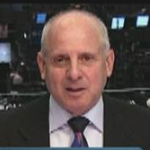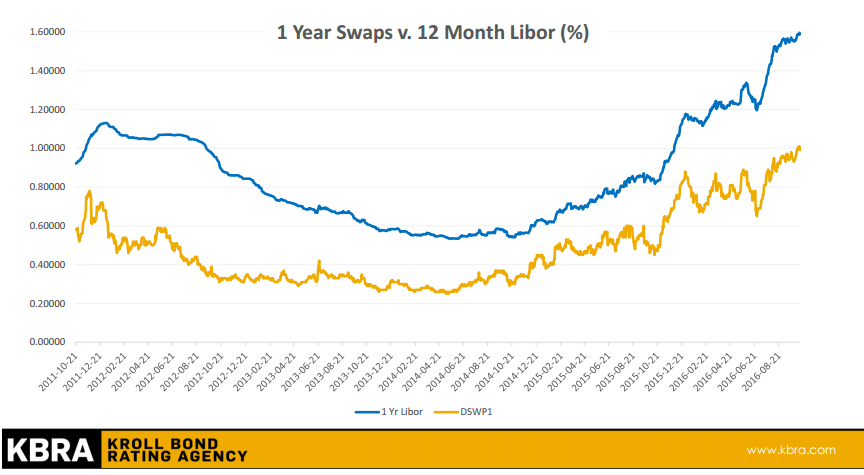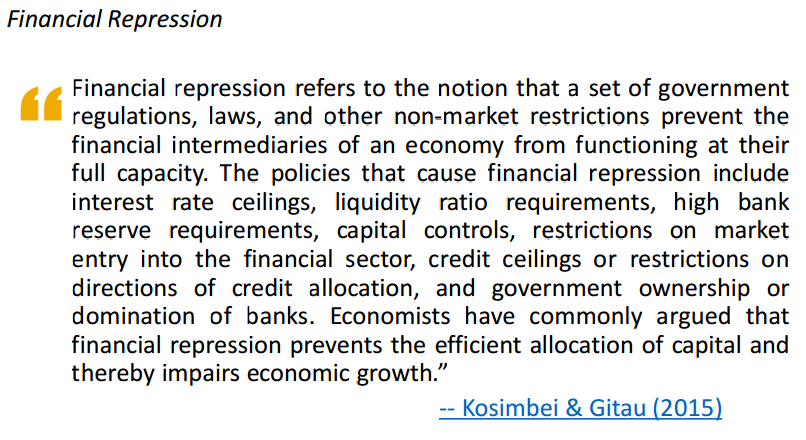
FRA is joined by Danielle DiMartino Booth and Peter Boockvar in discussing the impact of the Trump administration on the market, along with its effects on US pension funds.
Danielle DiMartino Booth makes bold forecasts based on meticulous research and her years of experience in central banking and on Wall Street. Known for sounding an early warning about the housing bubble in the 2000s, Danielle offers a unique perspective to audiences seeking expertise in the financial markets, the economy, and the intersection of central banking and politics.
Prior to joining The Lindsey Group, Peter spent a brief time at Omega Advisors, a New York based hedge fund, as a macro analyst and portfolio manager. Before this, he was an employee and partner at Miller Tabak + Co for 18 years where he was recently the equity strategist and a portfolio manager with Miller Tabak Advisors. He joined Donaldson, Lufkin and Jenrette in 1992 in their corporate bond research department as a junior analyst. He is also president of OCLI, LLC and OCLI2, LLC, farmland real estate investment funds. He is a CNBC contributor and appears regularly on their network. Peter graduated Magna Cum Laude with a B.B.A. in Finance from George Washington University.
FINANCIAL MARKETS AFFECTED BY TRUMP
The market is celebrating the possibility of major tax reforms, regulatory changes, and infrastructure. The main focus right now is tax reforms. The trade issue is not necessarily going to be one thing; it’s potentially going to be a variety of things as things progress rather than anything particularly planned. The market is celebrating the possibility that we can break out of the 2-2.5% GDP range over the next couple of years. It’s driven by tax policy that’s more conducive to capital investment, which has been a drag on GDP. That’s the optimism; the question is whether it’s going to get passed and when it’ll be impactful. If it does pass, we’re not going to feel the impact until 2018-2019. In the meantime, there are still challenges the US economy faces, both in terms of US growth, global growth, and changes in monetary policy and a different direction in interest rates globally. There’s a tremendous amount of optimism going into the New Year, but it’s really going to come down to timing. After inauguration day we might see markets take a step back.
Infrastructure spending is going to be the second thing administration focusses on. They want to get this tax bill passed, and they need to do it as revenue neutral as they can. They’re going to spend the most amount of capital on that, and infrastructure spending is not happening any time soon and shouldn’t even be part of the discussion right now. Trump will be expending quite a bit of his political capital on appointing someone to the Supreme Court right away, as well as gathering up the money needed to push through the infrastructure spending. February 2017 will be the third longest economic expansion in the post WW2 era, and you have to ask yourself if this economy is going die of exhaustion.
Interest rates are moving higher and historically those long term long time expansions have been tripped up by rises in interest rates. What got us here was a decade of zero interest rates and massive quantitative easing, and now we’re seeing no QE and rising interest rates. We’ve built this economic and market construct that’s addicted to low levels of interest rates. So we can all be excited about Trump liberalizing the US economy, but he still has to deal with the unwinding of the biggest bubble we’ve ever had. And that’s not going to be painless.
A CHALLENGE TO INFRASTRUCTURE SPENDING
Politically speaking, it goes back to the support Trump is going to find within his own Republican party. You can pass spending bills of the magnitude of something like Obamacare much more easily if borrowing costs for the government are 1.8%. If you look at US debt, you’re talking $47T of debt. Not all this debt matures in the same year, but over the next couple of years we have massive debt maturities and that’s going to happen at a higher cost of capital. Higher interest expense is going to eat into the benefits of lower corporate tax rates and other regulatory letups from the government. When you create a debt bubble and then get a rise in interest rate, that’s going to hurt people who are over-levered and don’t have enough cash to offset that.
Rising interest rates could present a formidable challenge and you add to that the sheer amount of supply that’s coming online, whether you’re talking about the hotel sector, the multifamily sector, the amount of shadow inventory weighing down the office sector, and retail. We’ll be seeing more announcements of brick and mortar locations closing after this holiday shopping season. At some point, the simple number of units of supply implies that refinancing is going to be extremely difficult because you won’t be able to offset the increase in interest rates. There’s too much capacity in real estate and the economy is only running at about 70%. Trump can lower taxes to zero but we still have to work through the extra capacity built up in a variety of industries. This is going to take years to work through, regardless of Trump and the policies he passes.
INTERNATIONAL EFFECTS
Europe is plagued by slow growth, enormous amounts of debt, and the ECB has distorted their entire financial system. The European bond markets are unprepared for any rise in inflation and any taper whatsoever. China should be in the forefront again, as they’re trying to moderate their property market without crashing it. Japan’s bond market will be part of the global rise in interest rates. With markets overvalued in many different error classes, there’s no margin for safety and no room for error. There will be a lot of focus in the coming year as it pertains, especially to China, to how quickly they can run through their reserves.
The cost of hedging out your currency has gotten to the point where it’s not profitable to do so unless you can get a really high rate of return. It’s easier said than done. One of the potential unforeseen hiccups going into 2017/2018 as we see the potential for the global economy to slow more, is that there might be a need for a lot of the amount of money flowing into the US commercial real estate from foreigners to go back home.
It appears that Trump has put some rational people in with him, and someone has told him that China does not qualify, on paper, as a currency manipulator. Even threats of it from Trump are enough to slow things down.
TREND AGAINST PHYSICAL CASH
With Trump in office, we have the chance to put rational people at the head of the Fed who don’t want to abolish cash. You’ll have many people in this country revolt if they threaten to get rid of any denomination of cash. This country is much less conducive than India to pull something like that off. A lot of it is more talk than action, especially in the US where people voted for Trump because they were anti-establishment, and getting rid of cash is the epitome of an establishment move. Our central bankers here have been able to benefit from and learn from Japan’s failure at implementing negative interest rates. Central bankers worldwide have a blueprint of how to not eradicate cash, because of how severely it’s impacted India and the people who live inside who’ve been devastated by it.
DESTRUCTION OF THE AMERICAN DREAM
Even though we’ve had quite a bit of deleveraging, household debt has become a way of life for Americans. The average American family today has $1600 in credit card payment, and the interest rate was at 19%. Central banks placate the masses with household debt and making it accessible, rather than forcing the government to make more difficult choices and allowing us to continue to be a save and invest economy. Other countries that have different cultures than ours have their sights set on the weaknesses it exposes in our social fabric.
As noble as central bankers think they are, in practice all they’re doing is encouraging you to borrow money. That’s why they think lower interest rates are good and higher interest rates are bad. Now we’ve reached a point where the US economy has levered up to such an extent that we are so sensitive now to any changes in interest rates and financing that debt. Instead of creating a savings and investment culture, we’ve created a borrowing and spending culture instead. That’s something that has to flip around and reverse itself, but it’s going to be a messy process.
STRUGGLING PENSION FUNDS
There’s not enough time to make up for what’s been lost by the assumed rate north of 7% not being compounded all these years and having gone in the opposite direction, to say nothing of what will happen when markets correct and take down the liquid part of pension portfolios. They’ll be left with the understanding and realization that private equity is not only an inappropriate investment risk-wise, but also a devastating investment because of the lack of liquidity. Pension funds were piling into real estate at the peak of a cycle, they were piling into private equity just as there’s a possibility that the Trump administration is going to end tax deductibility of interest expense on new debt accumulated going forward, which dramatically damages the entire private equity model. It’s chasing yesterday’s winners, and pensions have done it over and over again.
They’re not being honest with their constituencies who think that their retirement money is there. That money does not exist, but the politicians out there aren’t being honest with their constituencies.
The political appetite for government bailouts on pensions are going to be very low. Could it be possibly forced in time? Possibly. But we’ve got four years of someone in the White House who will veto these measures.
Abstract by: Annie Zhou <a2zhou@ryerson.ca>




 12/23/2016 - The Roundtable Insight: Danielle DiMartino Booth & Peter Boockvar On The Market Outlook Into 2017 & Consequences Of Federal Reserve Policies On The American Dream
12/23/2016 - The Roundtable Insight: Danielle DiMartino Booth & Peter Boockvar On The Market Outlook Into 2017 & Consequences Of Federal Reserve Policies On The American Dream



























